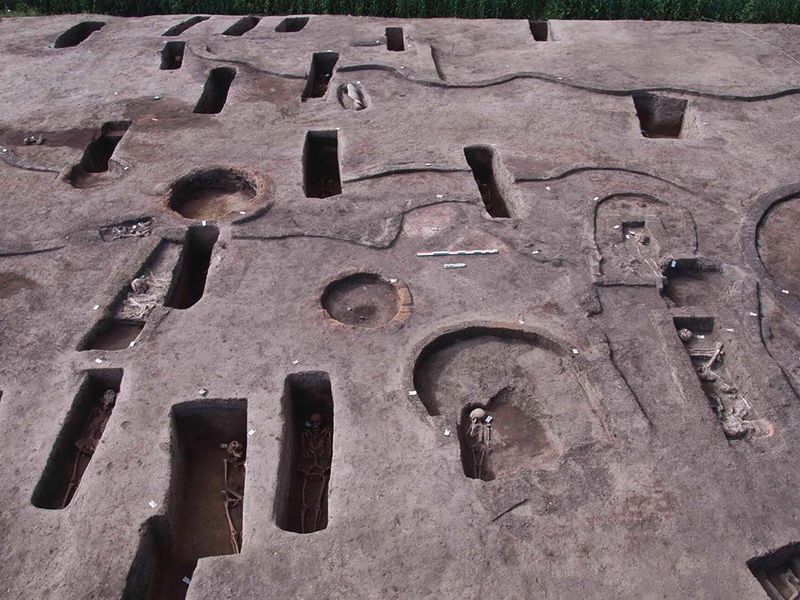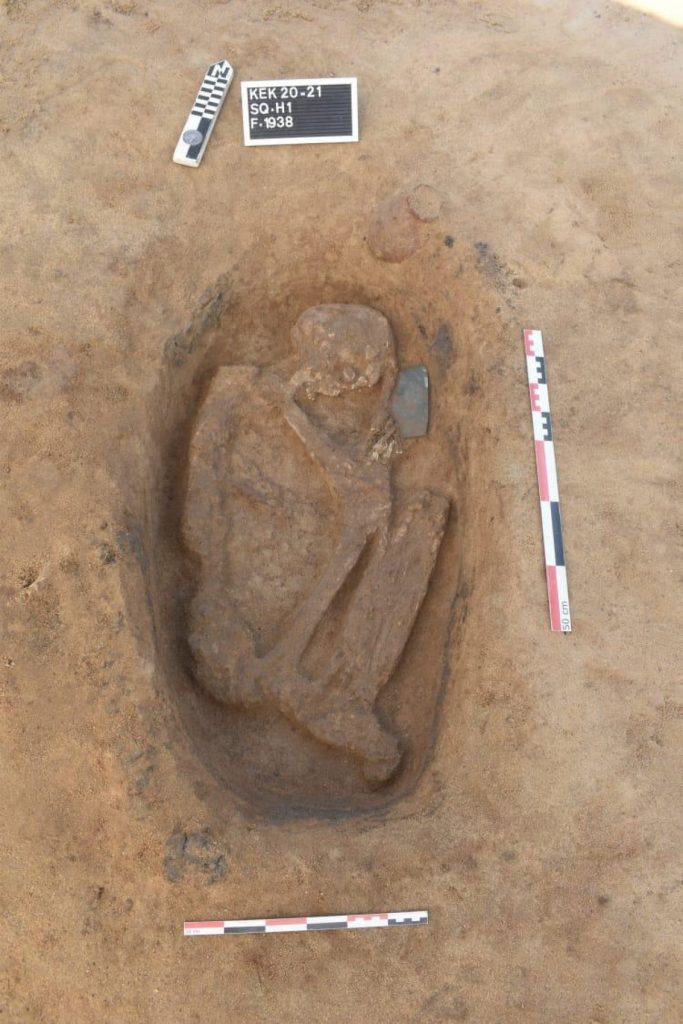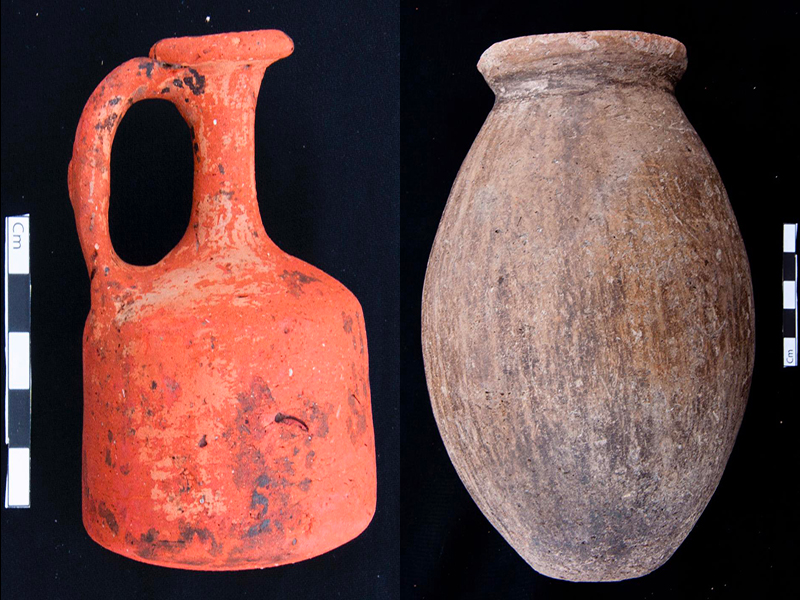Archaeology & History
Archaeologists Have Discovered 110 Tombs From Three Different Eras of Ancient Egyptian History in the Nile Delta
Scholars are now trying to determine whether and how the people of one period absorbed the traditions of another.

Scholars are now trying to determine whether and how the people of one period absorbed the traditions of another.

Sarah Cascone

Excavations at an ancient site in the Nile Delta have uncovered no less than 110 tombs dating from three different periods of ancient Egyptian history.
The find includes 68 oval-shaped tombs from the predynastic Buto Period (6000–3150 B.C.), 37 rectangular-shaped tombs from the Second Intermediate Period (1782–1570 B.C., also known as the era of Hyksos, a Semitic people that ruled Egypt at the time), and five oval-shaped tombs from the Naqada III period (3200–3000 B.C.), according to Smithsonian Magazine.
“This is an extremely interesting cemetery because it combines some of the earliest periods of Egyptian history with another important era, the time of the Hyksos,” Salima Ikram, an Egyptologist at the American University in Cairo, told Reuters. “Egyptologists are working to understand how the Egyptians and the Hyksos lived together and to what degree the former took on Egyptian traditions.”
The discovery was announced in statement from the Egyptian Ministry of Tourism and Antiquities, which plans to continue excavations on the site. Artifacts uncovered to date include stoves and ovens, pottery, silver rings, funerary furniture, scarab amulets, pottery, and bricks from old buildings.

Scarab amulets from the archeological site of 110 tombs at the Nile Delta. Photo courtesy of the Egyptian Ministry of Tourism and Antiquities.
The dead were buried in squatting positions in the Buto period tombs, while Hyksos period burials were done face-up, their heads pointing to the west. Both the Buto and Hyksos tombs included the remains of babies in jars, an ancient burial practice that remains mysterious.
“But there’s always the interpretation that the jar is almost like a womb, so basically the idea is to return [the] baby back into Mother Earth, or into the symbolic protection of his mother,” archaeologist Yoav Arbel told Live Science of a similar discovery last year.
Though maintaining tourism has been a struggle in Egypt over the past decade—first due to revolution, and more recently because of the ongoing pandemic—the government hopes discoveries such as these will encourage overseas travelers to visit.
Earlier this month, Egypt’s president, Abdel Fattah el-Sisi, marked the opening of Cairo’s long-awaited National Museum of Egyptian Civilization with an elaborate procession across the city of 22 ancient Egyptian royal mummies.
See more photos from the newly uncovered tombs below.

A human skeleton from a tomb at the Nile Delta. Photo courtesy of the Egyptian Ministry of Tourism and Antiquities.

A human skeleton from a tomb at the Nile Delta. Photo courtesy of the Egyptian Ministry of Tourism and Antiquities.

Artifacts from the archeological site of 110 tombs at the Nile Delta. Photo courtesy of the Egyptian Ministry of Tourism and Antiquities.

A human skeleton from a tomb at the Nile Delta. Photo courtesy of the Egyptian Ministry of Tourism and Antiquities.